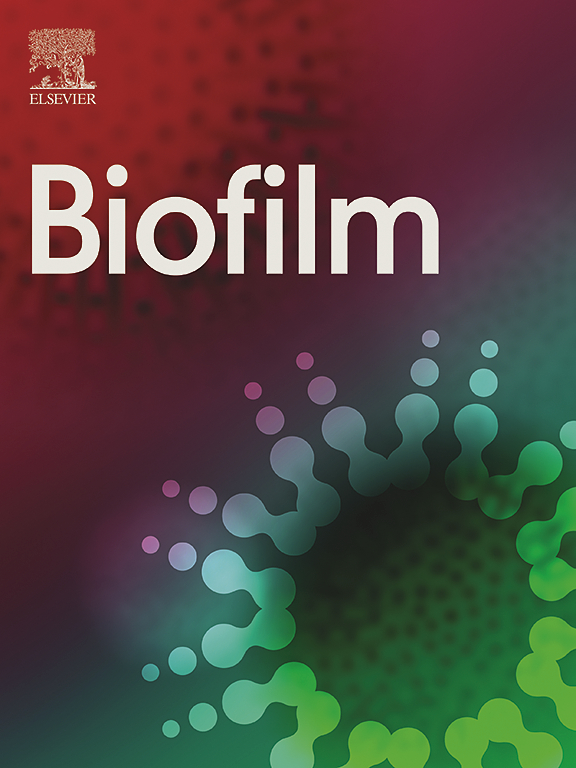Salmonella biofilm formation diminishes bacterial proliferation in the C. elegans intestine
IF 4.9
Q1 MICROBIOLOGY
引用次数: 0
Abstract
Non-typhoidal Salmonella serovars are a significant global cause of foodborne infections, owing their transmission success to the formation of biofilms. While the role of these biofilms in Salmonella's persistence outside the host is well understood, their significance during infection remains elusive. In this study, we investigated the impact of Salmonella biofilm formation on host colonization and virulence using the nematode model Caenorhabditis elegans. This infection model enables us to isolate the effect of biofilm formation on gut colonization and proliferation, as no gut microbiome is present and Salmonella cannot invade the intestinal tissue of the nematode. We show that a biofilm-deficient ΔcsgD mutant enhances gut proliferation compared to the wild-type strain, while the pathogen's virulence, the host's immune signaling pathways, and host survival remain unaffected. Hence, our work suggests that biofilm formation does not significantly contribute to Salmonella infection in C. elegans. However, complementary assays in higher-order in vivo models are required to further characterize the role of biofilm formation during infection and to take into account the impact of biofilm formation on competition with gut microbiome and epithelial invasion.
沙门氏菌生物膜的形成减少了优雅小鼠肠道中细菌的增殖。
非伤寒沙门氏菌血清型是全球食源性感染的一个重要原因,其传播成功的原因在于生物膜的形成。虽然这些生物膜在沙门氏菌宿主外的持续存在中的作用已广为人知,但它们在感染过程中的意义却仍然难以捉摸。在本研究中,我们利用线虫模型秀丽隐杆线虫研究了沙门氏菌生物膜的形成对宿主定殖和毒力的影响。这种感染模型使我们能够分离出生物膜形成对肠道定植和增殖的影响,因为没有肠道微生物群,沙门氏菌无法侵入线虫的肠道组织。我们的研究表明,与野生型菌株相比,生物膜缺陷ΔcsgD突变体能增强肠道增殖,而病原体的毒力、宿主的免疫信号通路和宿主存活率则不受影响。因此,我们的研究结果表明,生物膜的形成并不会对 elegans 感染沙门氏菌产生重大影响。然而,要进一步确定生物膜形成在感染过程中的作用,并考虑到生物膜形成对肠道微生物群竞争和上皮侵袭的影响,还需要在更高阶的体内模型中进行补充实验。
本文章由计算机程序翻译,如有差异,请以英文原文为准。
求助全文
约1分钟内获得全文
求助全文

 求助内容:
求助内容: 应助结果提醒方式:
应助结果提醒方式:


